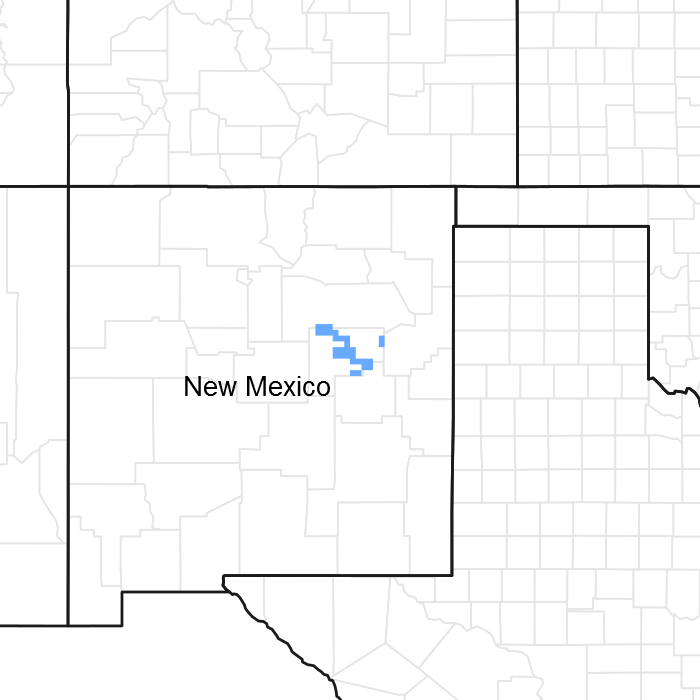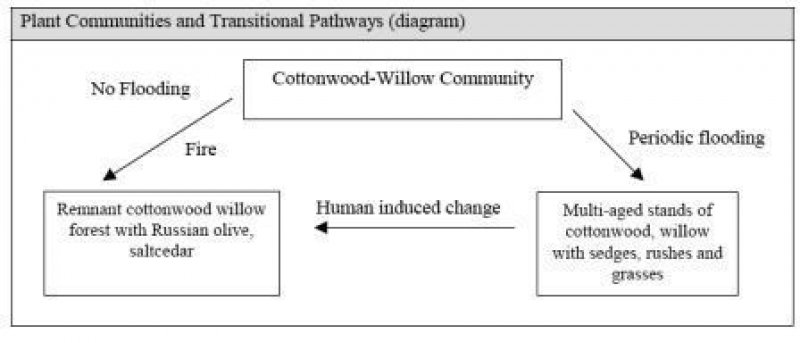Ecological dynamics
Riparian vegetation germinates on moist mineral soils. As seasonal flooding occurs, the river channel moves, thus allowing for the establishment of new stands of cottonwoods and willows. Various age class stands of woody vegetation can be found across the floodplain. Overflow ponds, cutoff chutes and wet areas also provide areas for regeneration of new plants.
The introduction of dams and other flood-control structures has greatly impeded the above processes. Under current conditions, flooding is rare. Thus, regeneration of cottonwoods and willows is rare. The result is a competitive advantage for invasive woody species: Russian olive and saltcedar.
State and transition model
Custom diagram
Standard diagram
More interactive model formats are also available.
View Interactive Models
Click on state and transition labels to scroll to the respective text
State 1 submodel, plant communities
State 2 submodel, plant communities
State 1
Reference State
This plant community is characterized by stands of cottonwood and willow and a general lack of invasive woody plants.
Community 1.1
Reference Community
This phase is characterized by scattered, large Rio Grande and Plains cottonwood trees with even aged stands of replacement trees. Understory and openings contain Coyote willow and some baccharis. The streambank hosts sedges, rushes and grasses.
Community 1.2
Multi-Aged Stand
This community exhibits recent regeneration of cottonwoods and willows. The overstory is multi-aged. Rush and sedge extend beyond streambanks to the treads of floodplains. Russian olive and saltcedar are generally absent.
Pathway P1.1
Community 1.1 to 1.2
Flooding event
Pathway P1.2
Community 1.2 to 1.1
Moderate duration between flooding events, measured in years rather than decades.
State 2
Hydrologically-Altered State
This state is characterized by the relative dominance on invasive woody plants: Russian olive and saltcedar. Older cottonwoods are often present, but their progeny is notably absent.
Community 2.1
Naturalized Community
Small stand of Rio Grande cottonwoods, with Seepwillow and Coyote willow stands on the
banks. Also common are Saltcedar, and Russian olive. Alkali sacaton and threesquare are found
as groundcover. Rio Grande cottonwood seedlings are present.
Transition T1A
State 1 to 2
Prolonged absence of flooding resulting from the construction of flood-control structures.
Restoration pathway R2A
State 2 to 1
Significant flooding event or series thereof, coupled with the eradication of invasive woody plants. The former can occur if particularly intense rain events flood local tributaries.
Additional community tables


